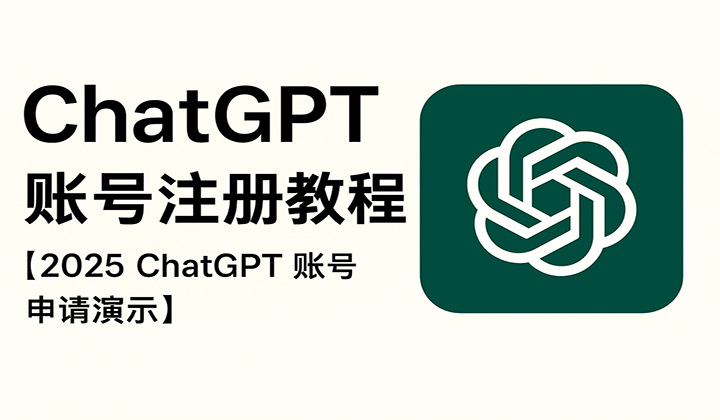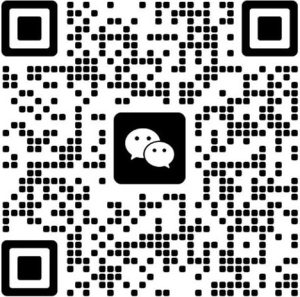Best Product Management System for Cross-Border E-Commerce

In the construction of cross-border e-commerce independent sites, the product management system is the operational hub of the entire platform. This article focuses on introducing the most popular and feature-rich open-source e-commerce solution—WooCommerce. Built on WordPress, WooCommerce not only offers powerful native e-commerce features that meet core needs such as product display, inventory management, multi-currency payments, order processing, sales analytics, and membership systems, but also has an extremely large plugin ecosystem to extend advanced functionality as needed.
But WooCommerce’s value goes far beyond “out-of-the-box” use. At its core, it is a highly customizable open-source framework, meaning businesses can develop specific functional modules based on their own workflows and market positioning, creating an e-commerce system truly tailored to cross-border sales logic. From small boutique independent sites to large multilingual, multi-currency stores, WooCommerce provides strong technical support and sustainable scalability, making it the preferred solution among product management systems for cross-border e-commerce independent sites.
To help readers quickly navigate and jump to topics of interest, this article includes a complete table of contents below. Each chapter title has an embedded link that will automatically scroll to the corresponding section when clicked. Whether you're learning about WooCommerce for the first time or want to dive deeper into the structure and integration strategies of product management systems for cross-border e-commerce independent sites, you can choose your reading path freely based on your needs to improve reading efficiency.
- Cross-border E-commerce Independent Site Product Management System—The History of WooCommerce
- Cross-border E-commerce Independent Site Product Management System—The Ecosystem and Advantages of WooCommerce
- Cross-border E-commerce Independent Site Product Management System—Detailed Explanation of WooCommerce’s Core Product Management Features
- Cross-border E-commerce Independent Site Product Management System—WooCommerce’s Integration Capabilities with Logistics, Payments, and Order Systems
One、Cross-border E-commerce Independent Site Product Management System—The History of WooCommerce

As the most representative e-commerce system under the WordPress ecosystem, WooCommerce’s development history can be regarded as the growth story of open-source e-commerce. It started as a lightweight plugin and gradually evolved into the core e-commerce engine supporting millions of independent sites worldwide. Understanding WooCommerce’s history helps to gain a more comprehensive view of its applicability and maturity in cross-border e-commerce.
From WooThemes to WooCommerce: The Beginning in 2011
WooCommerce was originally launched by the well-known theme development team WooThemes in September 2011. At that time, WooCommerce was created to solve the complexity faced by WordPress users when building e-commerce functionalities. It provided basic features such as product display, shopping cart, and checkout in the form of a plugin, while retaining WordPress’s high flexibility and ease of use. This combination made WooCommerce quickly favored by a wide range of users upon release, becoming the most popular e-commerce solution on WordPress at that time.
Acquired by Automattic: Entering a Larger Ecosystem
In May 2015, WooThemes, the company behind WooCommerce, was officially acquired by Automattic, the parent company of WordPress.com. This acquisition elevated WooCommerce from a third-party plugin to an important part of the official WordPress ecosystem. Automattic’s involvement not only brought stronger financial and technical support to WooCommerce but also greatly enhanced its global marketing capabilities. Since then, WooCommerce’s features have continuously improved, and its user base rapidly expanded, becoming a truly global open-source e-commerce platform.
Over a Decade of Development: Evolution from Plugin to Platform
To date, WooCommerce has undergone more than a decade of development. It has not only achieved the leap from an e-commerce plugin to a complete platform but also formed a large developer community and plugin ecosystem. Its multilingual support, multi-currency payment, REST API, and integration capabilities with various third-party services enable it to adapt to the ever-changing scenarios of cross-border e-commerce. Because of this, WooCommerce today is not just a tool but a complete product management system and a sustainable growth solution.
Two、Cross-border E-commerce Independent Site Product Management System—The Ecosystem and Advantages of WooCommerce

As one of the most mature solutions in open-source e-commerce systems, WooCommerce continuously iterates and upgrades its technical functions while forming a highly active and diverse plugin ecosystem worldwide. From product management to payment and logistics, from multilingual support to automated marketing, WooCommerce can meet virtually any business demand of cross-border independent sites through plugin combinations and custom development.
Powerful Plugin Ecosystem to Meet Diverse Scenarios
One of WooCommerce’s greatest advantages lies in its vast plugin marketplace. From official premium extensions (such as subscription systems, membership levels, B2B pricing) to third-party developer plugins for logistics tracking, multi-warehouse management, multi-currency conversion, tax calculation, and more, it covers almost all business modules in cross-border e-commerce. Whether targeting independent sites for European, American, Japanese, Korean, or Southeast Asian markets, it can flexibly match the required functional components.
Additionally, since WordPress itself has an extremely rich plugin resource pool, many content marketing plugins (such as SEO optimization, email automation, content recommendation, etc.) can seamlessly integrate into WooCommerce stores, helping e-commerce sites push forward on both operations and growth fronts.
Open Source Flexibility for Deep Custom Development
Compared with traditional closed SaaS platforms, WooCommerce’s open-source nature offers greater flexibility and control. Whether customizing product types, personalizing the front-end interface, or handling backend order logic and inventory algorithms, all can be deeply developed through PHP, REST API, or GraphQL interfaces. For businesses with development capabilities or technical teams, WooCommerce is a system without restrictions or vendor lock-in.
This also means you can design customized shopping experiences tailored to consumers in different countries or regions—for example, displaying different currencies based on the country, flexibly adjusting shipping methods according to the coverage of logistics providers, and even integrating local payment gateways such as Stripe, Klarna, PayPal, etc.
Active Community with Continuous Updates
WooCommerce has a huge global user base and developer community, meaning any technical issues can find documentation support or community help. Automattic officially releases security and performance optimization updates every year and continuously adapts to new e-commerce trends such as mobile optimization, AI recommendations, block editor support, and more. This provides long-term and stable technical assurance for cross-border independent sites.
Three、Cross-border E-commerce Independent Site Product Management System—Detailed Explanation of WooCommerce’s Core Product Management Features

For cross-border independent sites, an efficient and flexible product management system is not only the foundation for product display but also the key hub linking sales, inventory, logistics, finance, and other segments. WooCommerce’s performance in this core module fully meets various product management needs from startups to large cross-border marketplaces. The main functional dimensions are analyzed as follows.
Product Type Support: From Simple Products to Complex Variations
WooCommerce supports multiple product types, including:
- Simple Products: No variations, single price, such as regular accessories.
- Variable Products: Support combinations of multiple dimensions like color and size, suitable for apparel, footwear, and bags.
- Virtual/Downloadable Products: Suitable for digital goods, courses, services, etc.
- Subscription Products (via plugin extension): Support periodic payments and membership plans.
This product type system allows sellers to flexibly configure sales methods according to product characteristics, especially useful in SKU management for complex cross-border product catalogs.
Product Attributes, Categories, and Tag Systems
WooCommerce allows users to customize attributes (such as material, origin, brand, etc.) and build filtering and navigation systems based on these attributes. Combined with categories and tags, the site can easily construct multi-level, multi-dimensional product structures, making it easier for users to browse and search, while also benefiting SEO optimization.
For example, a product can simultaneously belong to multiple dimensions such as “Summer New Arrivals,” “Women’s Clothing > Dresses,” and “French Brand,” greatly enhancing display flexibility.
Inventory and Availability Management
WooCommerce has built-in comprehensive inventory management features, allowing sellers to:
- Set stock quantities for each product or variation;
- Enable/disable “out of stock” status display;
- Automatically control low stock alerts;
- Limit minimum or maximum purchase quantities per order;
- Use plugins to achieve multi-warehouse stock synchronization and region-based stock allocation.
This functionality is especially critical for managing cross-border warehousing and handling multi-region orders, effectively reducing risks of stockouts and shipping errors.
Multi-Currency and Multi-Price Support (Extended Features)
Although WooCommerce natively supports only single currency display, through plugins such as TIV Multi-Currency for WooCommerce, multi-currency price display and automatic switching can be realized. For example, visitors from the United States see prices in USD, while visitors from Europe see prices in EUR, with automatic currency conversion based on exchange rates. This is important for improving user experience and trust in cross-border e-commerce.
Additionally, different prices can be set for different user groups (such as wholesalers, VIPs), enabling tiered pricing strategies.
Product SEO, Images, and Description Optimization
Each product page supports rich content, including product summaries, detailed descriptions, custom fields, featured images, image galleries, video embedding, and more. At the same time, combined with plugins like Yoast SEO or Rank Math, SEO titles, descriptions, Schema data, and other settings can be configured individually for each product, helping improve organic search visibility on Google.
Four、Cross-border E-commerce Independent Site Product Management System—WooCommerce’s Integration Capabilities with Logistics, Payments, and Order Systems

In cross-border e-commerce operations, product listing is only the starting point. What truly impacts user satisfaction and repurchase rate is the efficiency and transparency of the chain from order placement to fulfillment. As the central system for product management, WooCommerce not only efficiently manages frontend product information but also possesses strong openness and integration capabilities, allowing seamless connection with major global logistics, payment, and order processing systems to build a complete cross-border fulfillment process.
Flexible Integration with International Logistics Services
WooCommerce can connect with various international logistics solutions through plugins or APIs, enabling cross-border sellers to avoid being limited to a single logistics provider and to flexibly adjust logistics strategies based on country, cost, and delivery time. The following international logistics can be integrated:
- DHL, FedEx, UPS, SF Express, Cainiao International, and other logistics plugins: Automatically obtain real-time shipping rates, generate international waybills, and track shipment status.
- ShipStation, Easyship, Sendcloud: Support unified management of multiple logistics channels, print shipping labels, and automatically synchronize order status. These are commonly used logistics centralized management tools for medium and large cross-border sites.
- Third-Party Warehouse Management System (WMS) Integration: WooCommerce can interact with independent warehouse systems via REST API to achieve multi-warehouse management, automatic assignment of shipping warehouses, and stock synchronization.
Support for Multiple Payment Gateways to Match Global Buyer Habits
WooCommerce can easily integrate various international mainstream payment methods. This highly modular payment system architecture allows WooCommerce to flexibly adapt to differentiated needs across regions and target markets. These international mainstream payment methods include but are not limited to:
- Credit Card Payments (Stripe, Square, PayPal)
- Local Payment Methods (such as Klarna, Sofort, iDEAL, PayU, Razorpay)
- Cross-border Settlement Platforms (such as Payoneer, WorldFirst, Airwallex)
Additionally, through plugins, it is possible to:
- Automatically display payment methods corresponding to the user’s country;
- Support multi-currency payments with automatic settlement;
- Enable payment modes such as installment payments, subscription automatic deductions, COD, etc.
Powerful Order Management Capabilities
WooCommerce’s order management system supports full-process tracking from order placement to completion:
- Automatically generate order numbers, record customer information, product details, and payment status;
- Allow manual or automatic order status changes in the backend (such as “Processing,” “Shipped,” “Completed,” “Refunding,” etc.);
- Support order notes, custom statuses, and order tag systems;
- Enable automation through plugins, such as automatically sending shipping notifications after payment completion, generating invoice PDFs automatically, and integrating with courier systems.
For growing cross-border sites, it is also possible to integrate WooCommerce ERP systems, order distribution systems, and automatic picking and packing tools to form a complete automated order fulfillment process, greatly reducing labor costs and minimizing human errors.
Conclusion
WooCommerce has become the preferred product management system for many cross-border e-commerce independent sites not only because of its powerful native features and flexible plugin ecosystem but also because its open-source nature provides brands with unlimited customization space. From product management, payment, and logistics to order fulfillment, WooCommerce can cover almost the entire cross-border operation chain, making it a high-quality solution that balances cost-effectiveness and technical scalability.
If you are looking for a product management and site-building system that truly fits your cross-border e-commerce business logic, or hope to upgrade and optimize the technology and functions of your existing site, welcome to contact Logic Digital Technology. We have professional e-commerce development and overseas site-building experience, providing your brand with high-standard and sustainable technical support and solutions.
This article is copyrighted by Logic Digital Technology (SZLOGIC) . Personal sharing and learning are welcome. Unauthorized use for any commercial purposes or reproduction of this article is strictly prohibited.


























